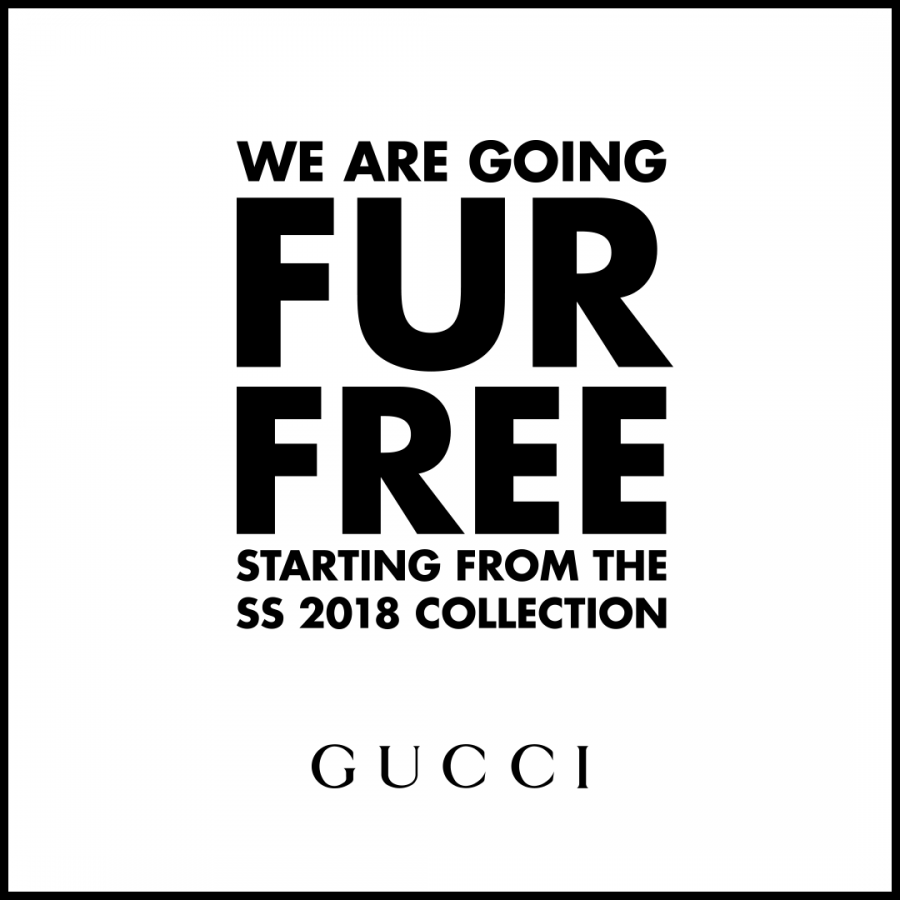Do You Faux With Fur?
Gucci decided to remove animal fur from all collections, beginning from Gucci Spring Summer 2018.
November 14, 2017
Furs are timelessly luxurious. Warm, soft and outrageously expensive, fur has long been a staple in fashion. However, as animal rights becomes a more prominent issue — particularly the endangerment of species coveted for their pelts — real fur has dropped a bit out of vogue. In response, several fashion houses have committed to stop using furs in a bid to become more ethical. Just this season, Gucci banned the use of fur, joining the ranks of other fur-free fashion houses like Stella McCartney, Armani and Vivienne Westwood.
“I don’t think it’s still modern and that’s the reason why we decided not to do that,” Gucci CEO Marco Bizzarri said in an interview with Business of Fashion. “It’s a little bit outdated.”
But are there ways to wear real deal, dead animal furs ethically? While People for the Ethical Treatment of Animals may say absolutely not, there are some gray areas.
Wearing the furs of invasive species is one way to both protect the environment and serve looks. For example, nutrias, which are original to South America and are somewhat similar to beavers, have been destroying Louisiana wetlands for a century. The government pays hunters $5 per carcass in order to stop the land loss, but most of the time, the bodies are just left in swamps to rot. In order to cut down on this waste, Louisiana designer and environmentalist Cree McCree created a line of nutria furs, Righteous Fur, in 2009.
“If they’re being killed anyway, then why not make something beautiful out of them?” McCree said in an interview with The New York Times.
Another way to possibly wear furs ethically is to shop for vintage or second-hand furs. Dollars spent on fur would go to the second-hand shop, which is often a small, local business. It doesn’t create demand for new furs, taking consumers out of the fur supply chain. Fans of this method also tout that it cuts down on waste.
“We surely don’t want to flash around the image that we support killing animals or anything like that, but if it is going to be thrown away, I personally think it is more ethical to make use of what has already been done,” model Sophia Hadjipanteli said on her Instagram account.
Of course, staying ethical is always subjective. These animals are still killed, which is something fur fans will have to live with no matter what. Also, brands that ban fur in the name of ethics may still commit other injustices. For example, The Los Angeles Times did an investigation into luxury Italian brands — like Gucci — that often make use of Chinese-staffed factories. These factories, according to The Times, “are nothing more than sweatshops with deplorable conditions and virtually indentured workers.”
Fashion may never be ethical, but maybe conscious steps towards faux, invasive or vintage furs can help get it there.
Email Amelia McBain at [email protected].















































































































































